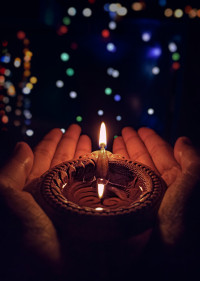As it is
Sorting electricity
Nepal is poised to produce surplus electricity in a few months, but there are still a few wrinkles the country needs to iron out.
Mohan Guragain
Life in 2015 Nepal, particularly in Kathmandu, was hellish. When the country was limping after the devastating twin earthquakes, a border blockade imposed by India to express disappointment over Nepal's new constitution ended up breaking people's back. The tremors of the earthquakes had pushed survivors to the edge, reminding mortals of their perishable lives, and the widespread shortage of essential goods owing to the blockade further added to the gloom. A kind of frustrating equality prevailed, and I was one of those who had to do everything to survive the extremely tough period.
With great difficulty, I managed to arrange four means of firing the kitchen—an induction cooktop, a half-filled gas cylinder bussed all the way from Jhapa, 10 litres of kerosene brought in from the Indian border town of Jogbani across Biratnagar, and an electric coil heater delivered from a Bhaktapur workshop by one of my colleagues. Four years later, the kerosene is more or less intact.
Round-the-clock electricity supply today is one of the reasons I'm often reminded of the pressing time. Back then, power outages were so chronic that you would not know when your heater would die. The electricity distribution network was so shaky that the sound of power transformers bursting was typical.
As the chief of Nepal Electricity Authority, Kulman Ghising worked wonders to bring the country from darkness to light, literally. Furthermore, the country is likely to add an additional 1150 megawatts of electricity from a slew of power projects including the years-in-the-making Upper Tamakoshi (456 MW) in the fiscal year ending mid-July.
If the state-owned utility fails to increase domestic consumption of power or export it to neighbouring countries, it will witness spillage of energy, and it might have to fork out billions in take-or-pay arrangements with independent power companies.
The country must introduce measures to increase domestic power consumption to address the issues mentioned above. A large chunk of Nepal's foreign currency reserves goes towards importing petroleum products to power vehicles and some factory units. Promotion of electric vehicles for private and public transportation is a practical solution to tackle both our rising petroleum products import bill and air pollution. While going electric in the transport sector may take time, we could start off right away by replacing wood- and LPG-powered stoves with electric induction stoves.
There are two key areas that the country will have to focus on— making electricity transmission infrastructure resilient to withstand the increased load, and, more importantly, slashing electricity tariff. Currently, to contain the demand for electricity, the power utility enforces different rates. As a result, power consumption has become more expensive for household customers. Particularly in the cities, where the tenant population is high. This layer of rates has given a leeway to homeowners to charge their tenants exorbitantly high prices for electricity use. I'd suggest that NEA chief Ghising introduce a uniform lowered tariff for all kinds of users and that will increase consumption and rid the confusion over tariff. When surplus power spills over the national grid, these reforms will definitely increase domestic use.
Use of air conditioning is still a rare thing in Nepali households. When the Tarai becomes intolerably hot in the summer months, using fan brings very little relief. People with concrete houses could be lured into using air conditioners if the energy tariffs are slashed. The same is true for winter. In many places where it gets unbearably cold, firewood is still extensively used. Using electrical heating and cooling appliances will help increase consumption and also reduce reliance on firewood.
Using electricity to power east-west trains may take years as the railway project is still in its infancy. But we could use clean energy in small popular ways to reduce our minimal carbon footprint and be a leader in green power production.
There was a time when almost all factories and offices in the country had fuel-run generators, and most houses in the cities had inverters for power backup. Nepal also imported up to 400 MW of electricity regularly from India. The scenario has changed, and the country is soon becoming a net power exporter, reversing the trade deficit in electricity.
As of 2017, according to a report, only 1.3 million of the 29 million Nepalis had no access to electricity. And officials expect Nepal to achieve 100 percent electricity connections within a few years, well ahead of the 2030 target year set by the Sustainable Development Goals.
These figures won't mean much unless people have dedicated power supply and can use electricity not only to light their homes and charge their mobile phones but also to heat their ovens. At a time when Nepal is looking for avenues to export electricity to neighbouring India and Bangladesh, and to a broader grid, we should also look within our boundaries to improve people's lives by enabling them to consume more power in productive ways and to utilise our growing power output.
Mr Kulman, are you listening?
The writer tweets @GuragainMohan.




 10.12°C Kathmandu
10.12°C Kathmandu










